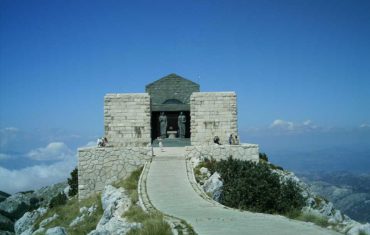A cable car, also known as an aerial tramway or gondola lift is a remarkable mode of transportation that combines functionality with breathtaking views. Providing a unique and thrilling experience, cable cars have become popular attractions in many tourist destinations around the world.
We are thrilled to proudly present Kotor-Lovcen cable car that showcases the beauty of our destination from a whole new perspective, offering an unforgettable journey suspended between the heavens and the Earth.
The cable car linking the UNESCO protected Old Town of Kotor and its formidable fortress with the scenic Lovćen National Park will greatly enhance our country’s tourism offerings, leaving no doubt about its positive impact.
The cable car route will be 3.918 meters long (2.434 miles), with a capacity of 1000 passengers per hour and 40 gondolas. Visitors will ascend from 65 to 1350 meters above sea level (213 to 4429 feet), while the travel time will be 11 minutes.
Interesting fact: It is fascinating to note that there was already a cable car in existence at this location over a century ago.
The Austro-Hungarian monarchy made the decision to build the Kotor-Cetinje Cable Car, amidst the turmoil of war. Construction took place in 1916, during challenging and complex winter weather conditions. The cable car was built out of necessity as the only means of supplying the Austro-Hungarian troops that had gained control over the hinterland of the Bay of Kotor and Mount Lovcen. It was not intended for passenger transportation but rather served the military’s logistical needs and support for their operations.
With 40.000 soldiers stationed in the territory of Montenegro, the Austro-Hungarian monarchy required extensive logistical support, including weapons, ammunition, and food. Additionally, they assumed responsibility for the occupied territories and the approximately 200.000 inhabitants residing there. While there was an existing road connecting the mountains and the sea, the construction of a cable car proved to be a far superior solution. Ships would transport supplies to Kotor, and then the cable car was utilized to transport everything to the hinterland efficiently.
The stations, substations, and sections were named after military leaders, reflecting the hierarchy, with the highest-ranking station bearing the name of the top military leader.
The cable car served its intended purpose and ceased operation at the end of the war in 1918.. The cable car, constructed by the Austro-Hungarian army in 1916, was a remarkable engineering feat. Its purpose was not passenger transport or scenic enjoyment but rather the logistical support of military operations. It remained operational until the downfall of the Austro-Hungarian Empire in 1918. This cable car project was of utmost importance, significance and complexity.
For several decades, the topic of reconstructing a cable car at this particular location has been repeatedly discussed. Following extensive negotiations, anticipation, and a degree of uncertainty, the foundation stone was ultimately laid for its construction in 2022. It was subsequently announced that the grand opening would take place on Statehood Day, exactly one year later, on 13th of July 2023.
The way in which the most beautiful bay of the Adriatic Sea, the Bay of Kotor, unfolds before you will leave no one indifferent. Visitors will be able to enjoy panoramic views of the bay from the restaurant or observation deck at the upper station, visit the national park and explore the Njegoš’s Mausoleum from 1974. In addition to the natural beauty of Lovcen National Park, the cable car ride will provide visitors with the opportunity to see the complex of Austro-Hungarian fortifications, including Vrmac, Goražda, and Trojica, once served military-strategic purposes, nowadays witnesses to a tumultuous past.
Cable car project already inspired us to create new private tours bookable on our site from moment that gondola starts running. Undoubtedly, this project will enhance Kotour travel agency offer, generate new demand for both sightseeing and hiking tours, extend our tourist season, and further establish Montenegro’s recognition on the world tourism map.









